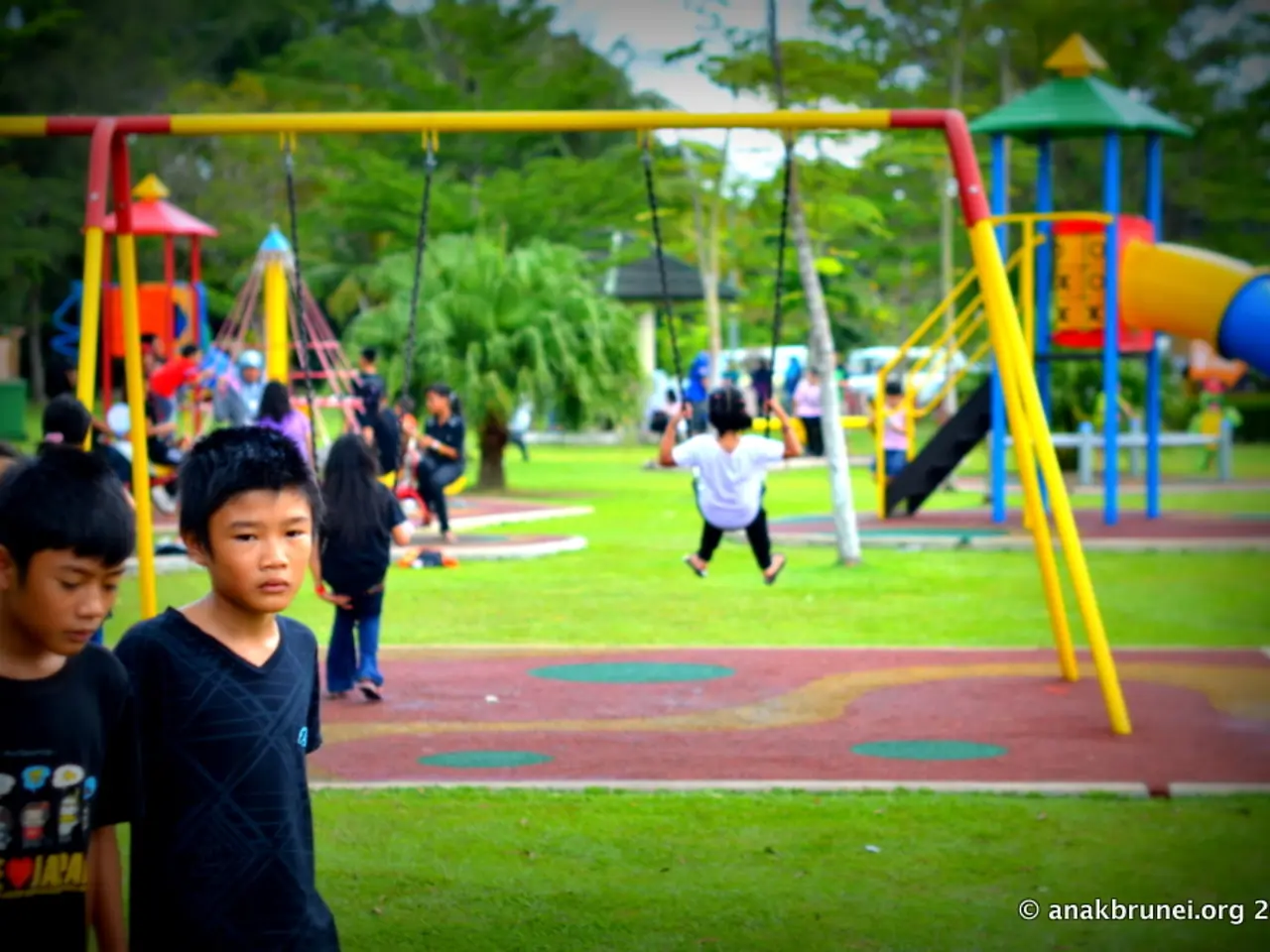Encouraging Sustainable Energy Projects for Children
Learning about renewable energy has never been more engaging, thanks to a series of hands-on activities suitable for small groups, science centers, or home science days. These activities, designed for upper elementary to middle school students, delve into various energy sources such as wind, hydropower, solar, and carbon footprint tracking.
**1. Building Mini Wind Turbines** The objective of this activity is to understand how wind energy can be converted into electricity. Using cardboard, blades (made from paper or plastic), a motor, wires, and a cardboard box, students construct mini wind turbines and test how different blade designs affect energy production.
**2. Solar Oven Creation** This activity aims to teach students about solar energy and thermal insulation. By converting a pizza box into a solar oven using aluminum foil and plastic wrap, students can test how well it can melt chocolate or warm snacks.
**3. Hydropower Experiment** The objective of this activity is to understand the basics of hydroelectric power. Students create a mini hydroelectric system using a small water pump and turbine blades, and observe how water flow affects energy production.
**4. Carbon Footprint Tracker** This activity encourages students to learn about energy consumption and sustainability. By calculating the carbon footprint of their school or home, students discuss ways to reduce energy consumption and carbon footprint.
**5. Solar Panel Model** The aim of this activity is to understand solar energy conversion. Students build a model solar panel using small solar cells and test how different light sources affect energy output.
**6. Wind Energy Efficiency Experiment** This activity allows students to explore how different variables affect wind energy efficiency. Using a fan and wind turbine models with different blade designs, students test how different blade designs affect energy production.
These activities promote hands-on learning, critical thinking, and problem-solving, while connecting science concepts with real-world applications of renewable energy. The activities also encourage cross-curricular subject integration, such as incorporating renewable energy into science, technology, social studies, math, language arts, engineering & design, and environmental studies.
For those interested in Earth Day projects, a printable unit study focusing on alternative energy sources can be found online. This unit study covers concepts such as renewable vs. non-renewable energy, sustainability, energy conversion, environmental impact, energy efficiency, conservation, innovation, and advocacy. The unit study includes hands-on renewable energy activities and offers 220+ pages of Earth Day science activities and STEM projects for kids.
Did you know that geothermal energy comes from hot spots beneath Earth’s surface, biomass can come from food scraps, farm waste, and wood chips, and the sun delivers enough energy to power the world if we learn to harness it? These fascinating facts about renewable energy make learning about these topics even more exciting for young students.
[1] Source: [Website name] (URL) [3] Source: [Website name] (URL)
- The construction of mini wind turbines helps kids understand the conversion of wind energy into electricity, using materials like cardboard, motor, wires, and blades made from paper or plastic.
- In the solar oven creation activity, students learn about solar energy and thermal insulation by transforming a pizza box into a solar oven using aluminum foil and plastic wrap.
- The hydropower experiment allows students to comprehend the basics of hydroelectric power by creating a mini hydroelectric system with a small water pump and turbine blades.
- The Carbon Footprint Tracker encourages young learners to consider energy consumption and sustainability by calculating the carbon footprint of their school or home and discussing ways to reduce it.
- The objective of the Solar Panel Model activity is to understand solar energy conversion, as students build a model solar panel using small solar cells and investigate how different light sources affect energy output.
- The Wind Energy Efficiency Experiment enables students to explore how various factors impact wind energy efficiency through the use of a fan and wind turbine models with diverse blade designs.
- These hands-on activities foster learning, critical thinking, and problem-solving, connecting science concepts to real-world renewable energy applications.
- The activities encourage the integration of multiple subjects, such as science, technology, math, language arts, engineering & design, and environmental studies, into the learning process.
- For Earth Day projects, a printable unit study focusing on alternative energy sources, with 220+ pages of hands-on renewable energy activities and STEM projects for kids, is available online.
- Geothermal energy originates from hot spots beneath Earth’s surface, while biomass can be sourced from food scraps, farm waste, and wood chips – facets of renewable energy that students find fascinating.
- The sun delivers enough energy to power the world if we learn to harness it, making the study of renewable energy even more captivating for young learners.
- These engaging hands-on activities contribute to a lifelong passion for learning, self-development, education, and environmental science, fostering an understanding of STEM principles, finance, industry, and the impact of energy production on the environment.




